
- Discover all the different energy sources
- Explore each energy source Take part in the interactive visit


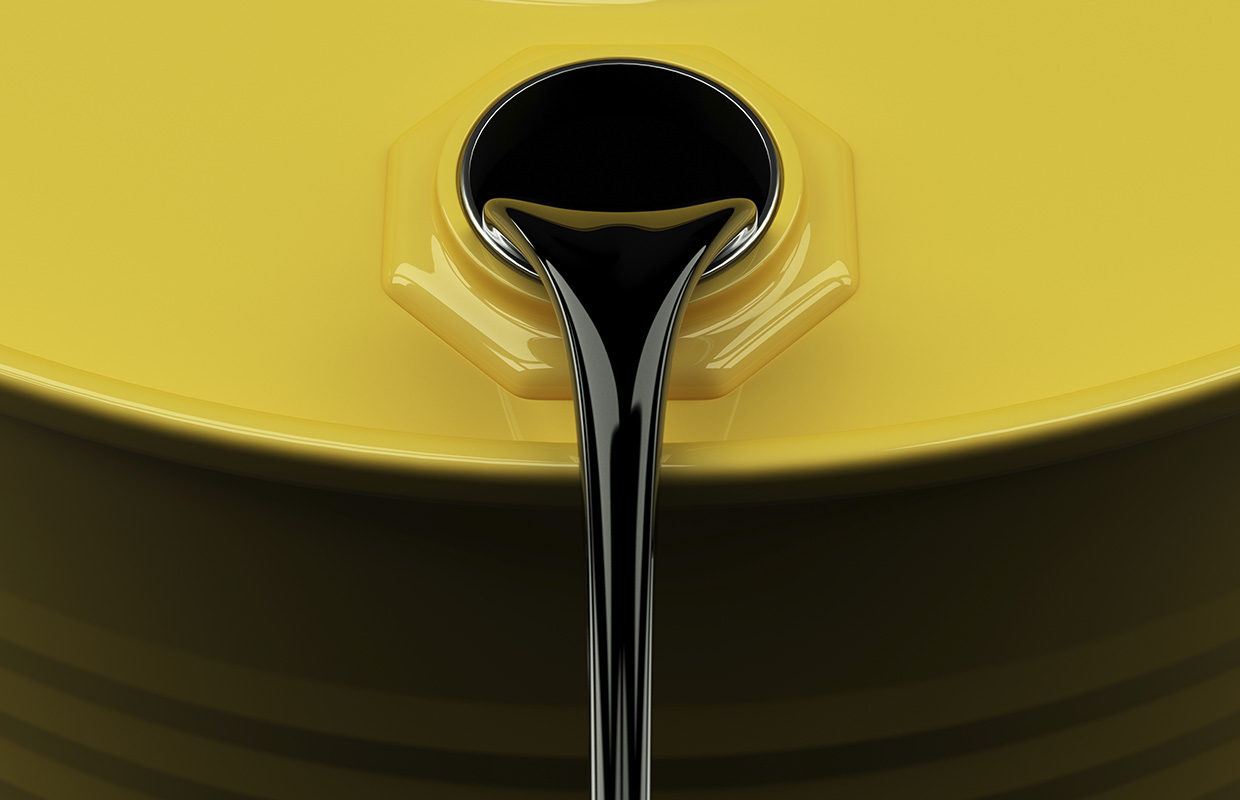 ©THINKSTOCK
©THINKSTOCK
Huge quantities of minerals, and sometimes the remains of living organisms - that is, plants and animals - accumulate over millions of years in a process known as sedimentation.
Organic-rich sedimentary rock is called “source rock”. At a depth of two to three kilometers, due to the higher temperatures found at these distances below the surface, the buried organic matter is gradually transformed into a brown oily liquid (oil) and gas.
Oil and gas are also called hydrocarbons since they are composed primarily of carbon and hydrogen atoms.
The hydrocarbons slowly make their way to the surface through the empty spaces in porous rock, made from sand for example, which acts like a sponge.
Sometimes their upward migration is stopped by an impermeable layer of “cap rock” accompanied by a structural deformation called a “trap”. This can lead to the formation of a reservoir.
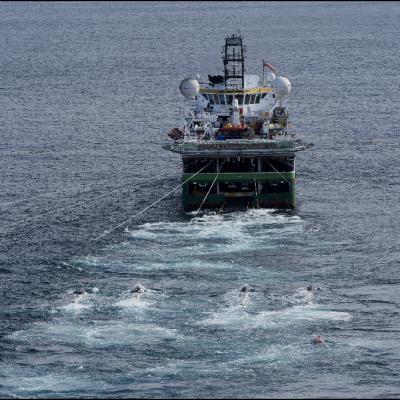 ©GLADIEU STEPHAN / TOTAL
©GLADIEU STEPHAN / TOTAL
Equipped with geological maps, satellite images and extensive knowledge of local and regional conditions, geologists study areas where sediments have accumulated.
They use a method known as “seismic reflection” to locate reservoirs. This is like taking an ultrasound scan of the sub-surface to map out what is underground.
A well is then drilled using a giant drill pipe, whose sections are screwed together one by one to form a string. At the end of the string is the drill bit. The drill string is lengthened as the well gets deeper by adding additional sections of pipe at the derrick end.
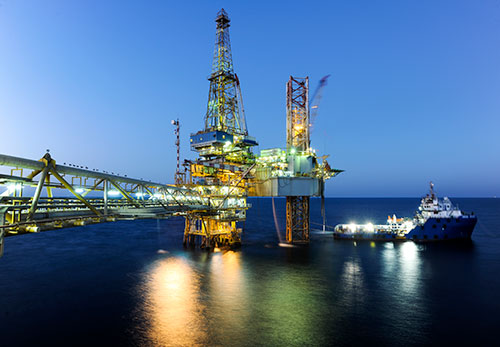 ©SORDOILLET PATRICK / TOTAL
©SORDOILLET PATRICK / TOTAL
Extraction can take place on land, offshore or under ice.
Today, almost all hydrocarbon reservoirs are accessible. The development of new techniques has made it possible to tap previously unextractable resources, such as fields in water depths of more than 3,000 meters or where pressure exceeds 1,000 bar.
Oil and gas produced offshore are shipped either by pipeline or by tanker from floating production storage and offloading (FPSO) units. Hydrocarbons produced onshore are transported by oil and gas pipelines.
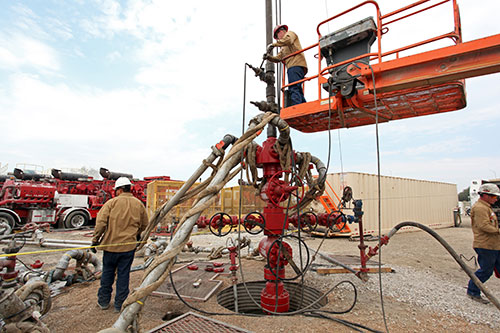 ©GONZALEZ THIERRY / TOTAL
©GONZALEZ THIERRY / TOTAL
Shale gas is extracted directly from the source rock, usually at a depth of 2,000 to 3,000 meters.
This is done by a process called hydraulic fracturing, or fracking. This technique consists in injecting a very high-pressure mixture of water, sand and chemical additives into the rock, which fractures to form a permeable network through which the gas can move. The released gas is extracted from horizontal wells.
Because the hydraulic operating range is relatively limited, multiple wells need to be drilled close together to exploit a deposit.
Hydraulic fracturing requires large volumes of water. For this reason, once water has been pumped into the well, it is processed for reuse in other operations.
Shale oil is not extracted directly from the source rock but from conventional, low-permeability reservoirs. These reservoirs are also exploited using the hydraulic fracturing process.
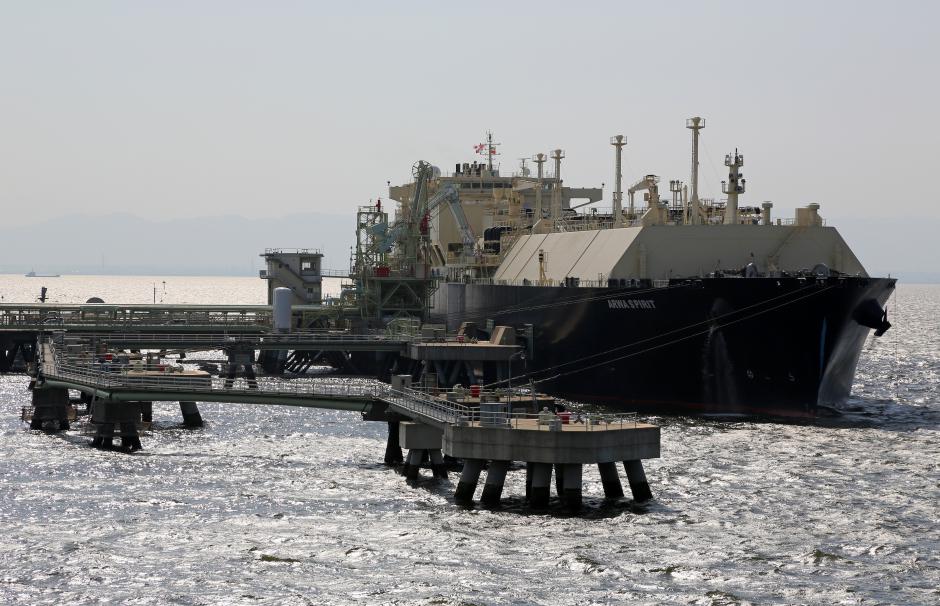 ©ZAMORA PHILIPPE / TOTAL
©ZAMORA PHILIPPE / TOTAL
Before it can be used, crude oil must be separated into individual components at a refinery. The different products obtained include liquid petroleum gas (LPG - butane and propane), naphtha (used for making plastics), transportation fuel (gasoline, diesel and kerosene), heating oil, lubricants and bitumens. These products can undergo further processing at petrochemical plants.
Gas is converted into liquid form (liquefied natural gas - LNG) for transportation and storage. It is then regasified for distribution to cities, where it is used for hot water, heating, cooking and fuel for certain vehicles.
Gas is also burned in power plants. The resulting heat converts the boiler water into steam. The steam powers a turbine, which in turn drives a generator to produce electricity.
The combustion of oil, oil derivatives and gas emits carbon dioxide.
 ©THINKSTOCK
©THINKSTOCK
Coal started to form more than 350 million years ago through the transformation of organic plant matter, mainly massive deposits of dead trees that lived in swamp forests near a lake or a lagoon.
Every time the water level rose, the waterlogged vegetation died and became trapped under layers of mud and silt. In the absence of air and bacteria, the buried remains failed to decompose and instead fossilized. Lignocellulose, the main component of wood, was then converted into a black rock comprised primarily of carbon - coal.
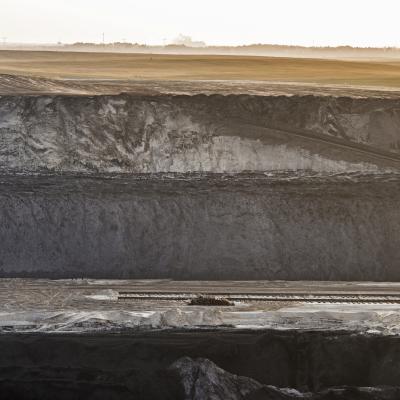 ©iStock.com / delectus
©iStock.com / delectus
The word “coal” is used to refer to two families of high-carbon fuels: charcoal and regular coal (formerly known as “earth coal”).
Charcoal is a man-made product obtained from burning wood, which is used among other things as fuel for barbecues. It is not a fossil fuel.
Coal, which looks like a hard, black rock, is a fossil fuel. Its calorific value - that is, the amount of heat produced over a certain period of time - is much higher than that of charcoal.
The four types of coal are peat, lignite, bituminous and anthracite. They each have their own characteristics and produce different quantities of heat when burned. Anthracite, which is the most carbon-rich of the four, is the most efficient type of coal.
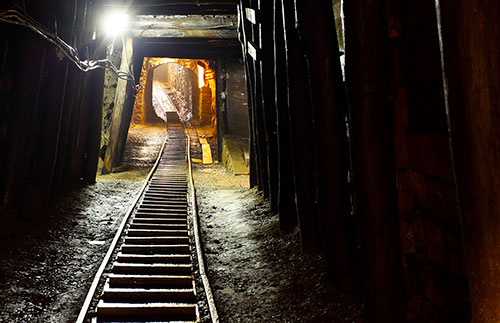 ©TOMAS SEREDA
©TOMAS SEREDA
Coal is an abundant resource that is evenly distributed around the world and easy to transport and store.
Coal is located underground and extracted in mines of varying depths. Coal found near the surface, just a few dozen meters under the ground, is extracted from open-pit mines. To access deeper deposits, however, it is sometimes necessary to dig kilometers of tunnels, at depths of 1,000 meters or more.
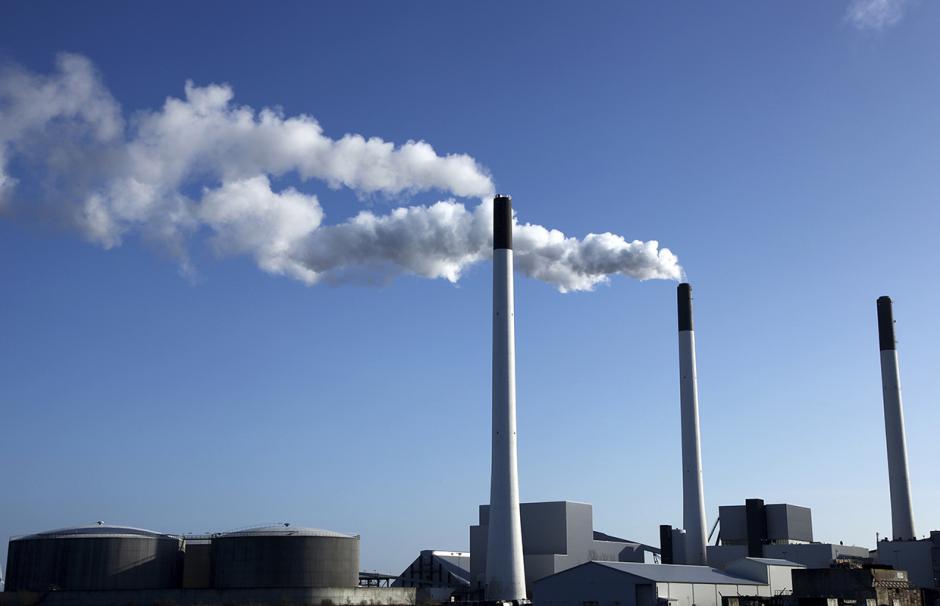 ©THINKSTOCK
©THINKSTOCK
During the 19th century Industrial Revolution, coal was widely used for steel production, household heating and transportation (locomotives and steamboats).
Today, coal is still used extensively, mainly for power generation but also for residential heating in some countries, such as China.
Coal is burned in a power plant. The resulting heat transforms the boiler water into steam. The steam powers a turbine, which in turn drives a generator that produces electricity.
When coal is burned, it emits large quantities of carbon dioxide, sulfur dioxide, nitrogen oxides and solid particles.
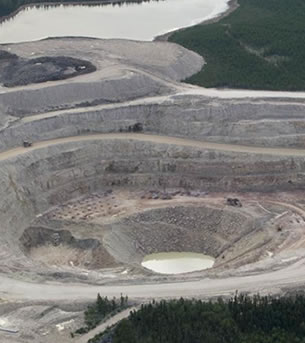 ©AFP PHOTO / DAVID BOILY
©AFP PHOTO / DAVID BOILY
Uranium has been present in the ground, in the form of oxides, ever since the Earth was formed.
Although it’s everywhere in the Earth’s crust and the oceans’ waters, it rarely occurs in economically recoverable concentrations.
Rock deposits containing minable quantities of uranium are referred to as uranium ore.
Naturally occurring uranium is primarily composed of two isotopes: U-238 (more than 99%) and U-235 (less than 1%).
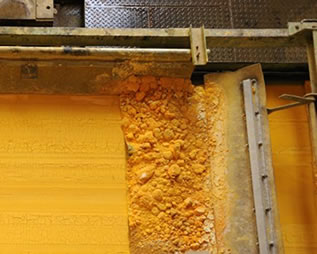 ©AREVA / TAILLAT JEAN−MARIE
©AREVA / TAILLAT JEAN−MARIE
Large underground or open-pit uranium mines are located in Australia, Kazakhstan, Canada, Niger and Russia.
The mined ore is crushed and then ground into fine particles. Next, it is chemically treated to obtain a concentrated extract containing about 75% uranium called yellowcake, due to its color and dough-like texture.
Before it can be used as “fuel”, the uranium needs to be enriched to nearly 5% U-235, the lighter of the two isotopes. Prior to this taking place, the uranium oxide must be converted to uranium hexafluoride to make it suitable for processing at a gas centrifuge enrichment facility.
The uranium hexafluoride is then reconverted to an oxide, which is transformed into small 7-gram pellets that are inserted into metal tubes called “fuel rods”. The fuel rods are used in nuclear power reactors.
The depleted uranium is mixed with plutonium oxide, created in the plant as a byproduct of the nuclear reaction, to produce mixed oxide fuel (MOX), which is also used in nuclear power generation.
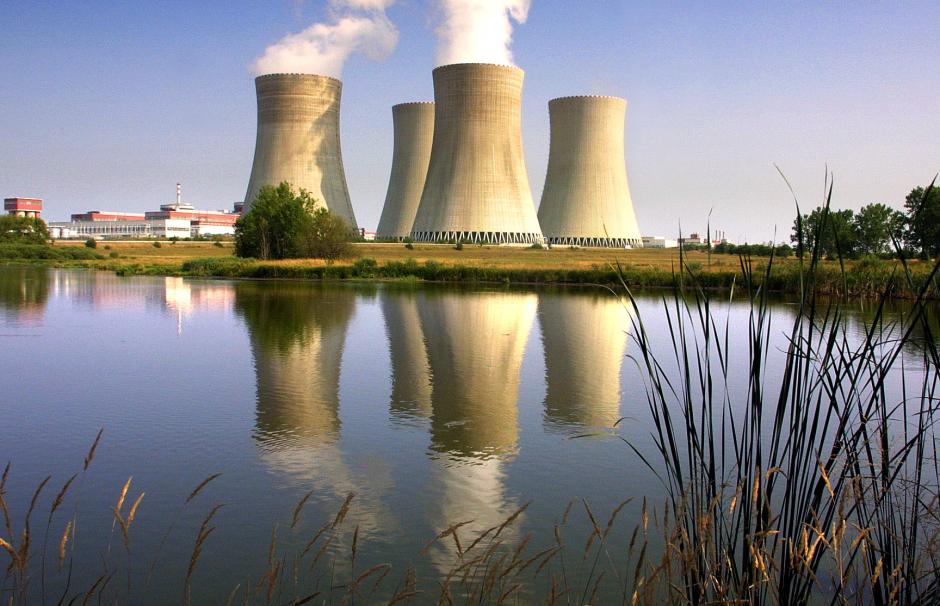 ©JAROMIR SEBEK / MAFA FILES / AFP
©JAROMIR SEBEK / MAFA FILES / AFP
Contrary to coal, oil and natural gas, uranium does not burn. To generate power, nuclear plants exploit the radioactive decay of the U-235 atom by bringing together enough fuel to accelerate U-235’s propensity to split into two smaller atoms. This process is known as nuclear fission.
When fission occurs in a reactor, it releases enormous quantities of energy, which is used to boil water into steam. The steam powers a turbine, which in turn drives a generator to produce electricity.
Seven grams of enriched uranium generate as much energy as 1.5 metric tons of coal and 70 kilograms of oil, without emitting carbon dioxide into the atmosphere. However, the uranium fission reaction produces radioactive waste, which must be handled and transported with extreme care. Certain types of waste remain radioactive for several hundreds of thousands of years, making it vital to store these materials safely and securely.
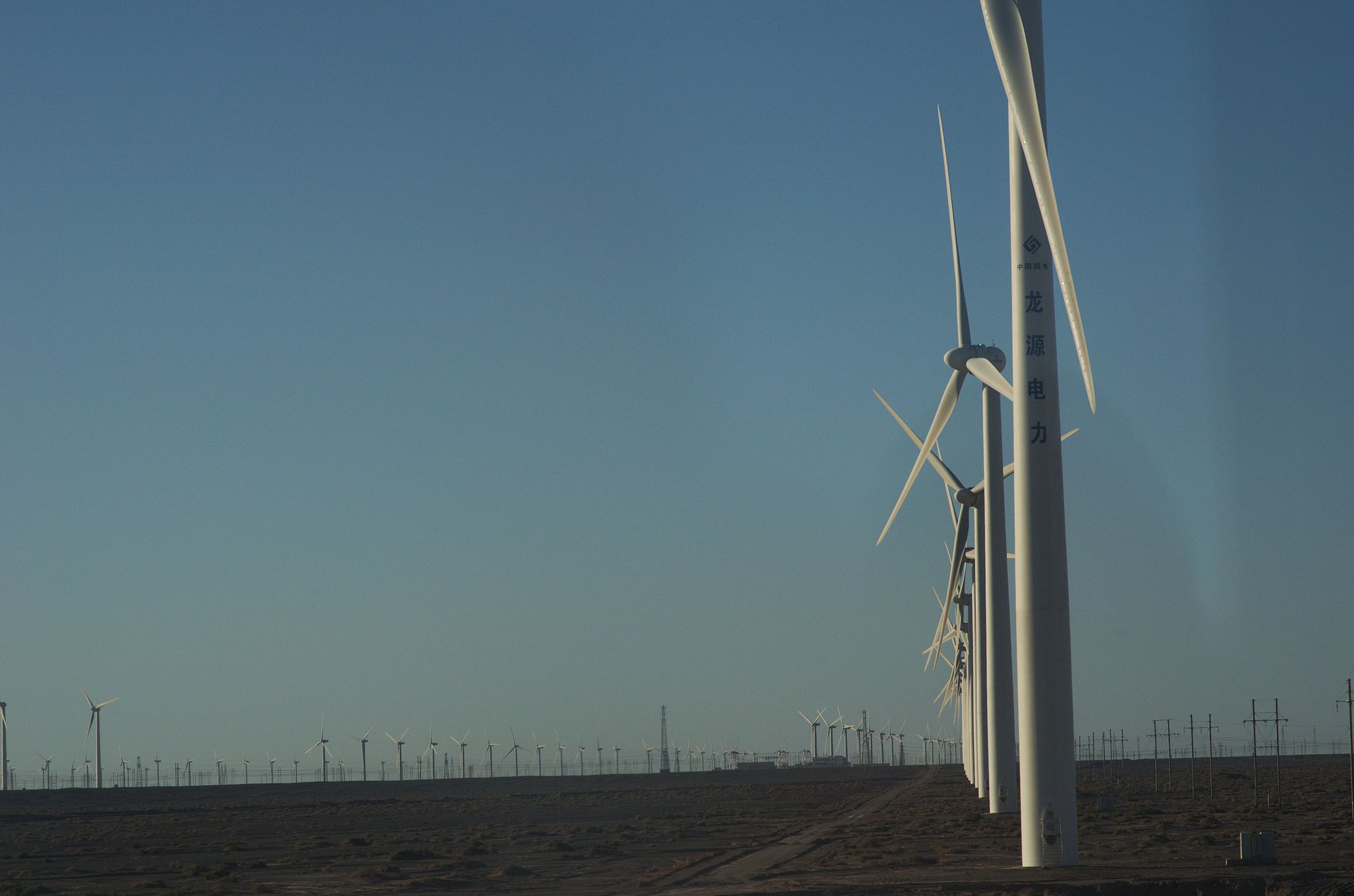 ©WIKICOMMONS
©WIKICOMMONS
The force of the wind is a renewable energy source that has long been used to propel boats and power windmills. Today, this energy is converted into electricity by wind turbines.
Deployed in open areas where the winds are sufficiently strong and steady, wind turbines are usually grouped together into what are known as “wind farms” comprised of several dozen units.
Concerns about landscape quality (heritage and protected areas), bird safety (migration routes) and noise levels (35 decibels at a distance of 500 meters, equivalent to a quiet conversation) may hinder or block the development of wind energy. Wind projects also face opposition from local residents.
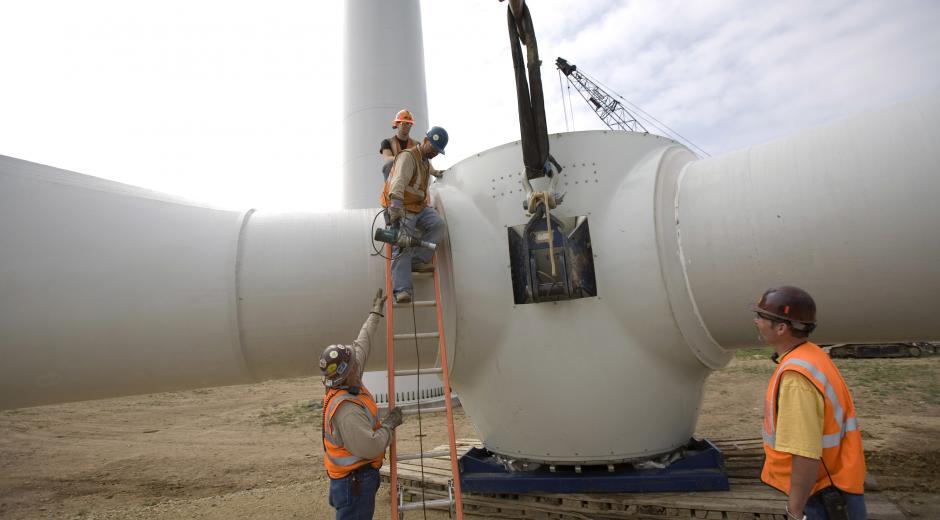 ©R.NICKELSBERG / GETTY IMAGES
©R.NICKELSBERG / GETTY IMAGES
The energy in the wind turns the blades of a turbine, which in turn drives a generator to produce electricity.
A wind turbine operates at full capacity about 20% of the time on average. Power output is proportional to the speed of the wind. The wind must blow faster than 10 kilometers per hour but less than 90 kilometers per hour.
Wind turbines do not emit carbon dioxide. As the strength of the wind varies significantly, wind energy is intermittent. Weather forecasting models and local observation of winds make it easier to predict output.
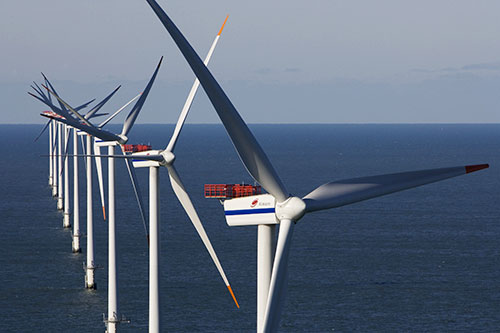 ©AFP PHOTO / JORGEN TRUE
©AFP PHOTO / JORGEN TRUE
There are two types of wind turbines: land-based (onshore) and sea-based (offshore).
They operate the same way. However, offshore turbines must be built to withstand harsh sea conditions, corrosion and water pressure at the base of the structure.
Wind turbines that are fixed to the seabed are limited to water depths of less than 40 meters. For greater depths, it is now possible to deploy floating wind turbines.
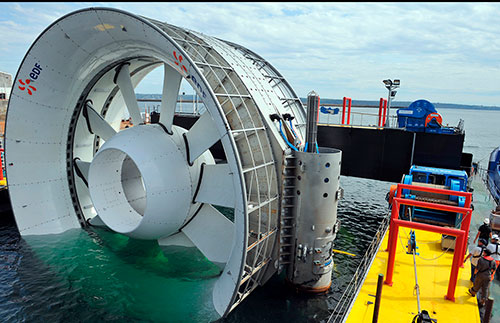 ©FRED TANNEAU / AFP
©FRED TANNEAU / AFP
Ocean energies, sometimes referred to as “marine energies” or “blue energies”, are produced by converting the sea’s natural movement into electricity.
Theoretically, these forms of energy have many advantages. They are renewable, abundant, constant and largely predictable and can be harnessed in many different regions of the world. They are still too costly to develop, however.
Renewable ocean energies are divided into several categories depending on water temperature, salinity, surface agitation and subsurface movement (currents).
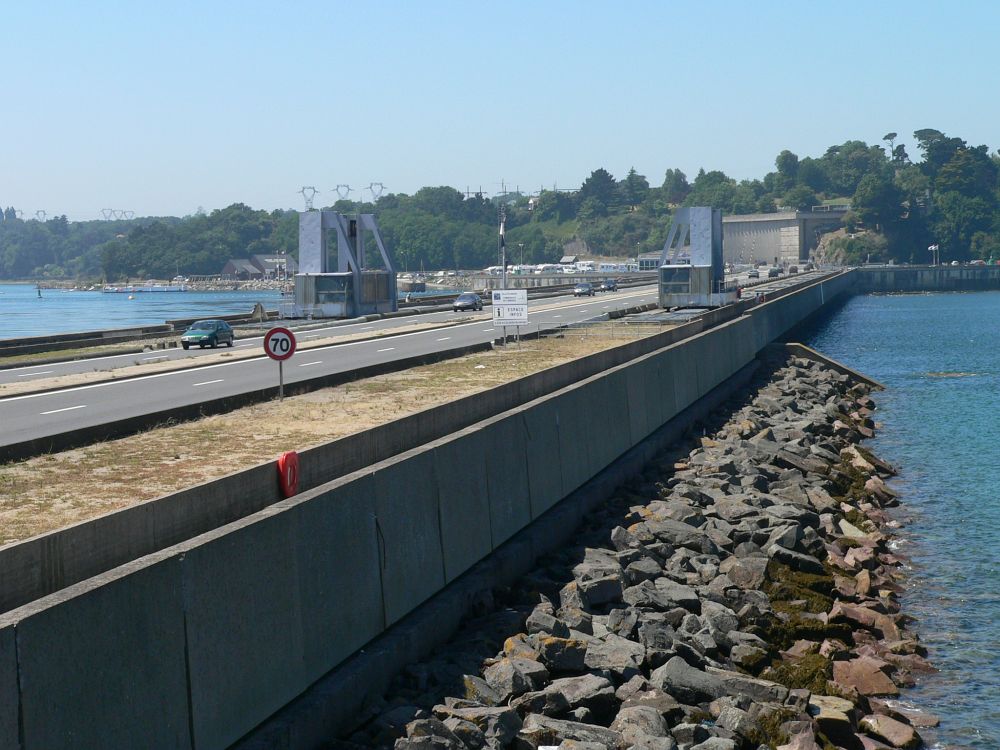 ©Wikicommons
©Wikicommons
The energy of the tides is harvested by tidal power plants. The La Rance tidal power plant in Brittany, France was opened in 1966, making it the first such plant in operation worldwide. It is still one of the most powerful to this day, along with the Sihwa station in South Korea.
The La Rance plant’s annual generation capacity is enough to meet the power needs of 200,000 people, the equivalent of the city of Rennes, France, for example.
A tidal power plant uses the potential energy of water, harnessing the differences in water height between high and low tides.
When the tide rises, water passes through the plant’s turbines, which in turn drive a generator to produce electricity. Water also flows into a basin, which is held back by a dam.
When the tide falls, the basin empties and water again passes through the turbines to generate power.
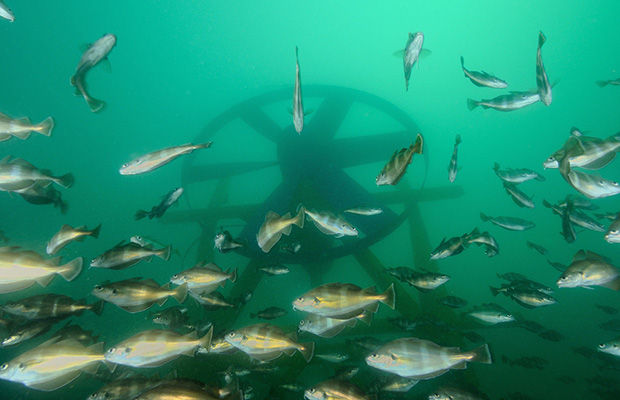 ©SABELLA / Y.GLADU
©SABELLA / Y.GLADU
Tidal turbines, also known as underwater turbines, are a new technology that captures the energy of ocean currents to generate electricity.
They work like wind turbines, only beneath the sea. Ocean currents move the blades of the turbine, which in turn drives a generator to produce electricity.
Several tidal turbine technologies are currently being tested around the world, particularly in the United Kingdom, Norway, Northern Ireland and the United States.
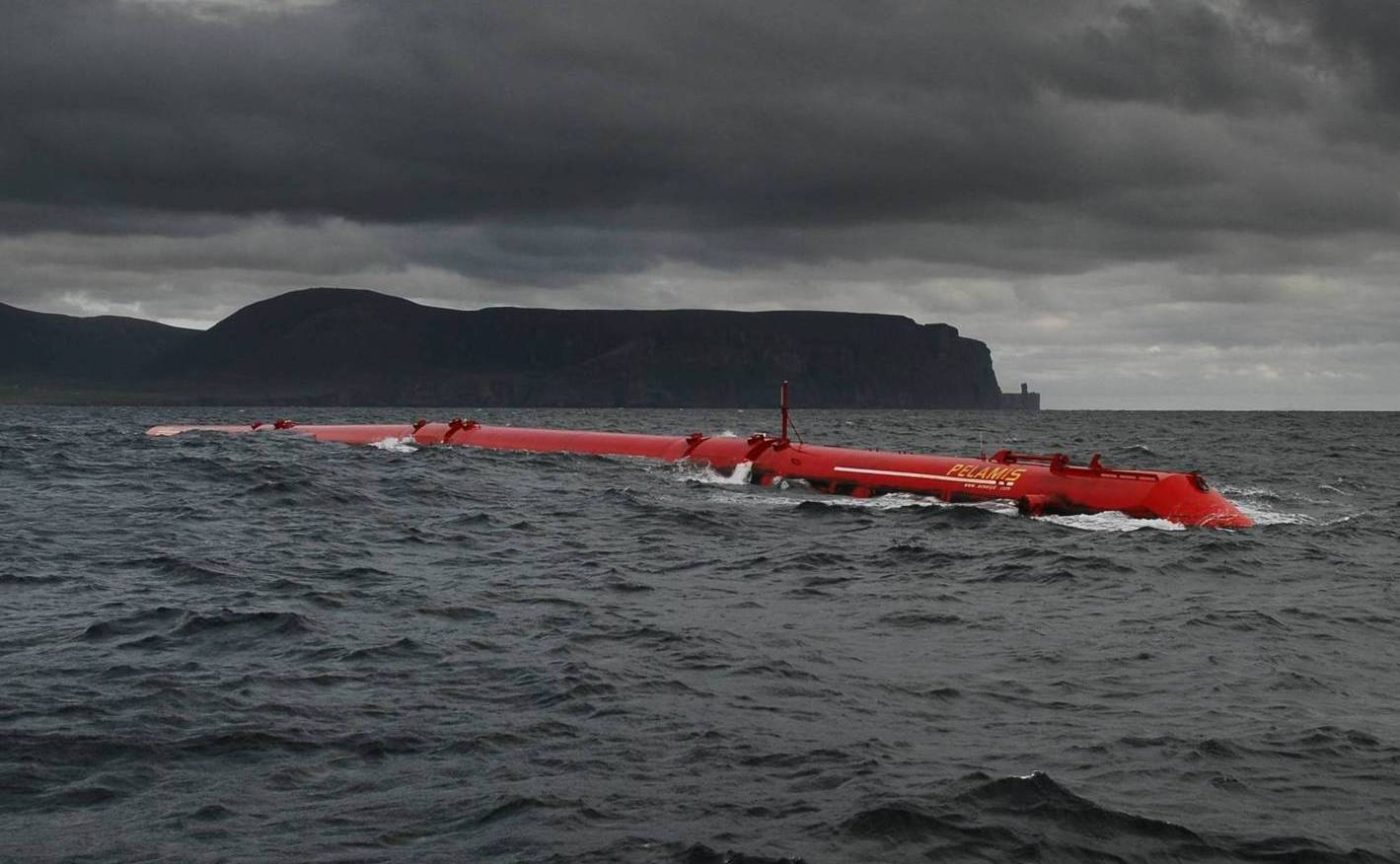 ©WIKIMEDIA / EUROPEAN MARINE ENERGY TEST CENTER (EMETC)
©WIKIMEDIA / EUROPEAN MARINE ENERGY TEST CENTER (EMETC)
Wave energy can be used to generate electricity by channeling the ocean’s swell, that is, the succession of waves produced by wind blowing on the ocean’s surface and sometimes propagated over extremely long distances.
Several solutions have been devised to harness this energy, most of which are either under review or in the testing stage. They are designed to:
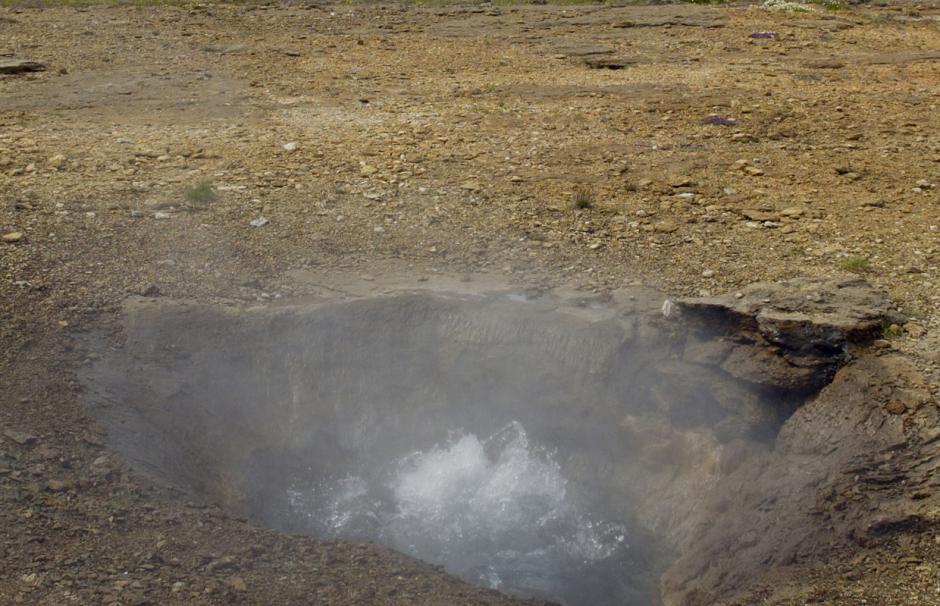 ©AFP
©AFP
Geothermal energy is a renewable resource.
As you go deeper below the Earth’s surface, the temperature gradually rises by an average of 3°C every 100 meters. In some regions, however, the temperature can reach 250°C at 1,500 meters, or even at less than 1,000 meters such as in Iceland.
The regions most likely to display this strong temperature increase have long been identified due to certain external signs, such as volcanic geysers and hot springs. Here the underground temperature is very high just a short distance below the Earth’s surface, as is the case in places like Guadeloupe, Iceland and the Philippines.
Thanks to satellite images and field sampling, models of the subsurface can be constructed to pinpoint areas conducive to geothermal development.
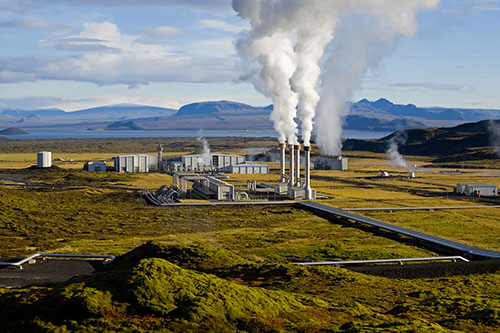 ©WIKICOMMONS
©WIKICOMMONS
Very high-temperature water found in the source rock is pumped up by wells drilled in suitable hot spots.
The water reaches the surface in the form of steam. The steam powers a turbine, which in turn drives a generator to produce electricity.
Heat from the steam can also be captured and used for heating purposes.
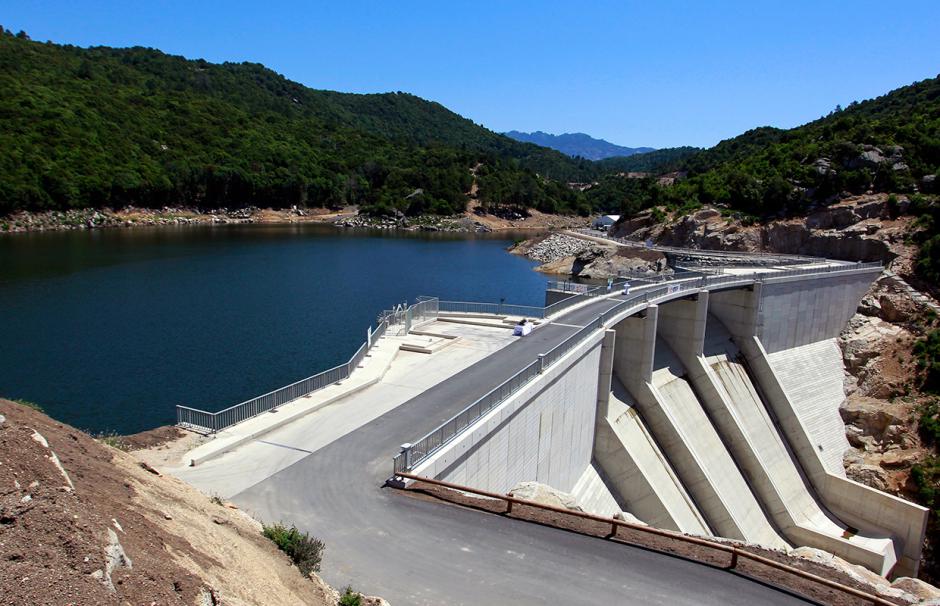 ©P. POCHARD / AFP
©P. POCHARD / AFP
Hydro is currently the leading source of renewable energy worldwide and the most evenly distributed across the globe.
It has been known about and harnessed for centuries. In the past, it was used to power mills and in certain industrial processes. Today, stream and river dams convert the energy of moving water into electricity, using water carried downhill by a penstock, for example.
The energy from the falling water, referred to as potential energy, turns a turbine, which drives a generator to produce electricity.
Owing to their ability to regulate water levels, dams can also create reservoirs suited to farm irrigation and sometimes even recreational activities, such as swimming and watersports.
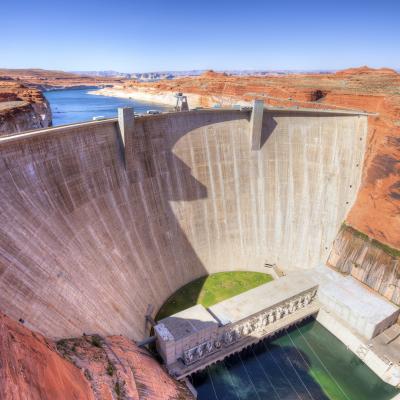 ©iStock.com / BirdofPrey
©iStock.com / BirdofPrey
There are several types of hydropower plants:
 ©GLADIEU STEPHAN - TOTAL
©GLADIEU STEPHAN - TOTAL
Biofuels are made from certain agricultural crops that have a high content of sugar or oil, such as rapeseed, sunflower, soybean, palm, beets, grains and sugar cane.
The technology is focused on using the inedible parts of plants and transforming them into oil or alcohol.
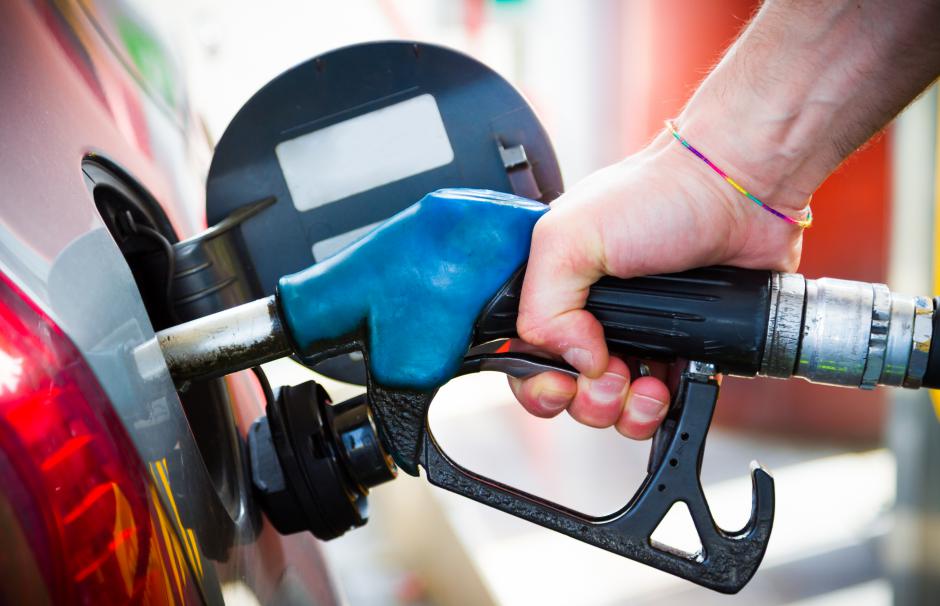 ©THINKSTOCK
©THINKSTOCK
Biofuels are blended with fuels of fossil origin.
Today, in Europe and the United States, gasoline and diesel sold in service stations may contain up to 7% biofuel. In some countries, such as Brazil, the percentage may be higher.
Bioethanol, derived from sugar-based materials, is the most consumed biofuel in the world.
Biofuels reduce fossil fuel usage and also emit less carbon dioxide, because they get carbon dioxide from the air through their leaves. However, they are still relatively expensive.
Biofuels can also have the disadvantage of diverting agricultural crops and land away from food for people and animals, which is why researchers around the world are looking for ways to process only those parts of the plants (leaves, stems and straw) that are not used for food consumption.
 ©iStock.com/EyeEm
©iStock.com/EyeEm
If nature is left undisturbed, organic waste (such as cow manure and fruit and vegetable residues) decomposes into humus (compost) and gas (biogas and methane).
If this waste is placed inside a heated tank without oxygen in an appliance called a methanizer, in 20 to 60 days, bacteria inside the digester will produce a gas composed primarily of methane and carbon dioxide, in addition to solid residue. This process is called methanation.
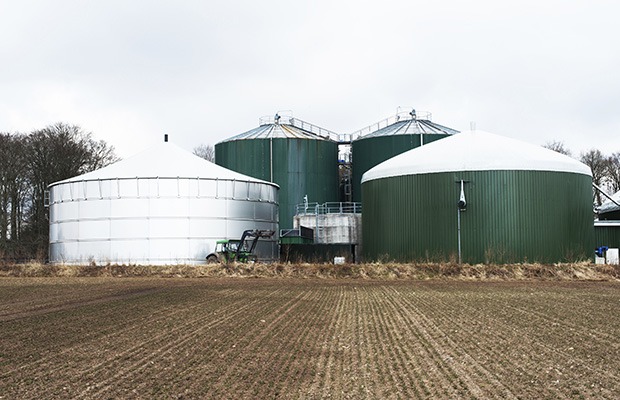 ©THINKSTOCK
©THINKSTOCK
The gas produced by methanation is called biogas. It can be used to generate electricity or heat and as a vehicle fuel.
It has the same chemical formula as natural gas and can replace it in all its current applications.
The residue, called digestate, can serve as fertilizer for farmland.
Methanation can be used to recover waste and reduce fossil fuel consumption. Farmers, in particular, can use the digester-produced energy to heat their homes, barns and greenhouses and dry their crops.
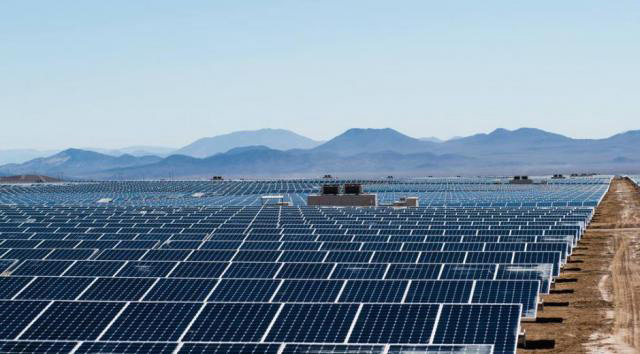 ©ZYLBERMAN LAURENT / TOTAL
©ZYLBERMAN LAURENT / TOTAL
The sun’s abundant and inexhaustible energy is captured by photovoltaic (PV) panels installed on roofs and facades or lined up in several dozens of rows at a photovoltaic power plant.
Sunlight causes the semiconductor material in the panels to release electrons, which produces an electrical current.
Although photovoltaic solar power still represents a modest share of total renewable energy use, it has undergone rapid development in recent years thanks to improved panel efficiency and declining costs. Given the enormous amount of energy produced by the sun, photovoltaic solar power will probably become the leading renewable energy source in years to come.
PV installations supply electricity to users in remote areas far from the power grid, particularly in certain developing economies.
Because solar energy is not available at night, it is considered to be intermittent.
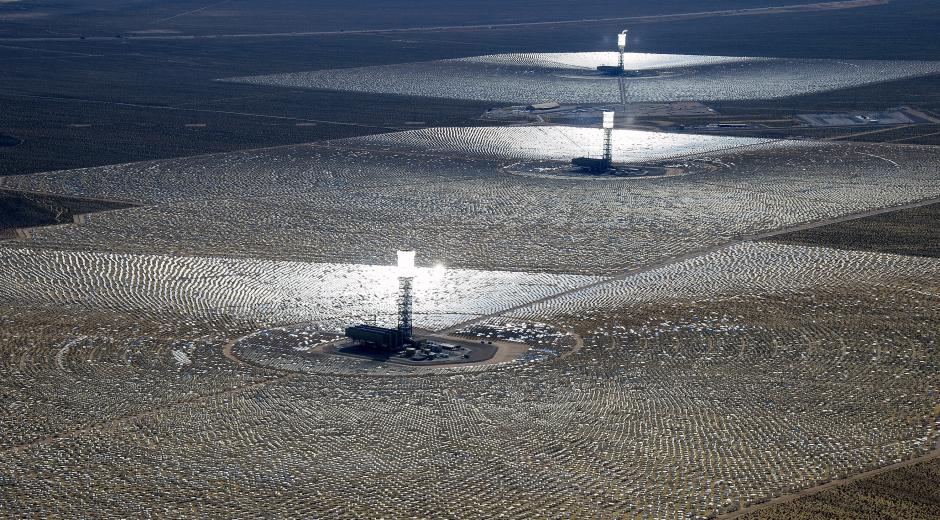 ©ETHAN MILLER / GETTY IMAGES NORTH AMERICA / AFP
©ETHAN MILLER / GETTY IMAGES NORTH AMERICA / AFP
There are two ways solar thermal can be used:
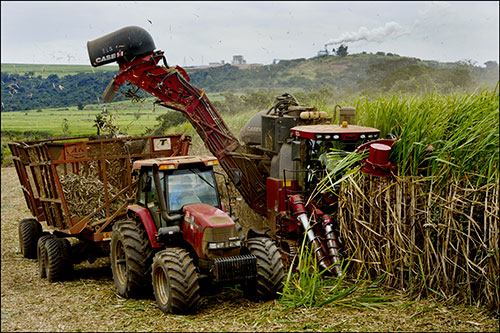 ©GLADIEU STEPHAN – TOTAL
©GLADIEU STEPHAN – TOTAL
The term biomass covers all of the different types of organic matter derived from the remains of plants and animals (such as mushrooms, algae and microorganisms) that can be burned directly or converted into other forms to produce energy.
Wood and its byproducts (joinery waste, sawdust, etc.) are the main source of biomass, a renewable energy used especially for domestic applications in the developing world.
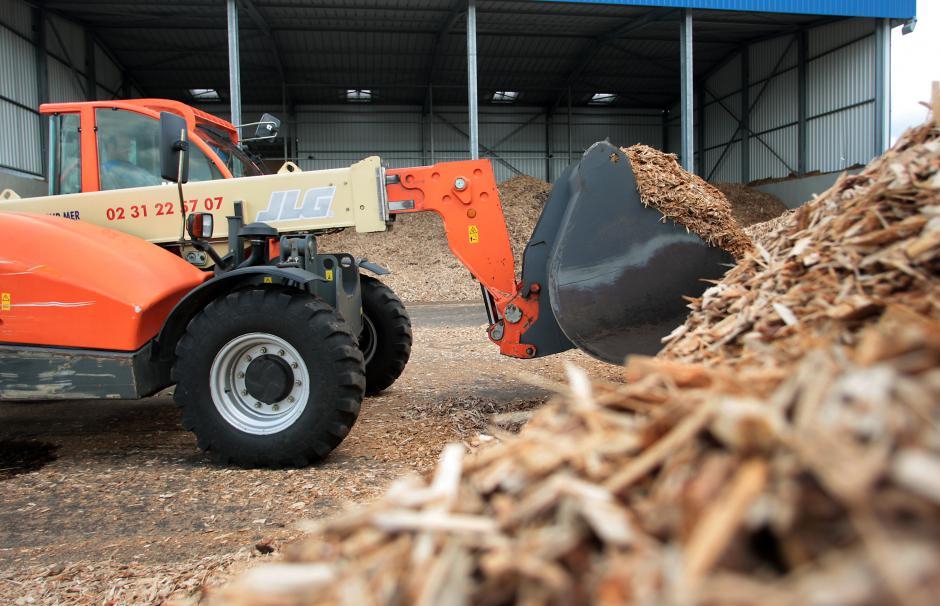 ©KENZO TRIBOUILLARD / AFP
©KENZO TRIBOUILLARD / AFP
Biomass is the oldest source of energy used by humans.
Today, it is used to generate electricity and heat, primarily through the combustion of forest, farming and agri-food waste or sawdust.
Biomass is most frequently used for cooking but can also be burned at a power plant. The heat transforms the water in the boiler into steam. The steam powers a turbine, which in turn drives a generator to produce electricity.
The heat can also be recovered and transferred to a heat exchanger connected to a district heating system to produce hot water and provide heat for homes, offices and public and other buildings.
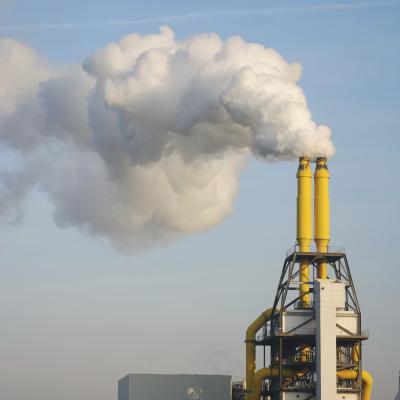 ©iStock.com / manwolste
©iStock.com / manwolste
Non-recyclable waste (known as residual household waste) and unsorted waste is burned at an incineration plant.
The resulting heat transforms the boiler water into steam. The steam powers a turbine, which in turn drives a generator to produce electricity. This electricity is most often used to power the plant.
The heat is recovered and transferred to a heat exchanger connected to a district heating system to provide hot water and heating.
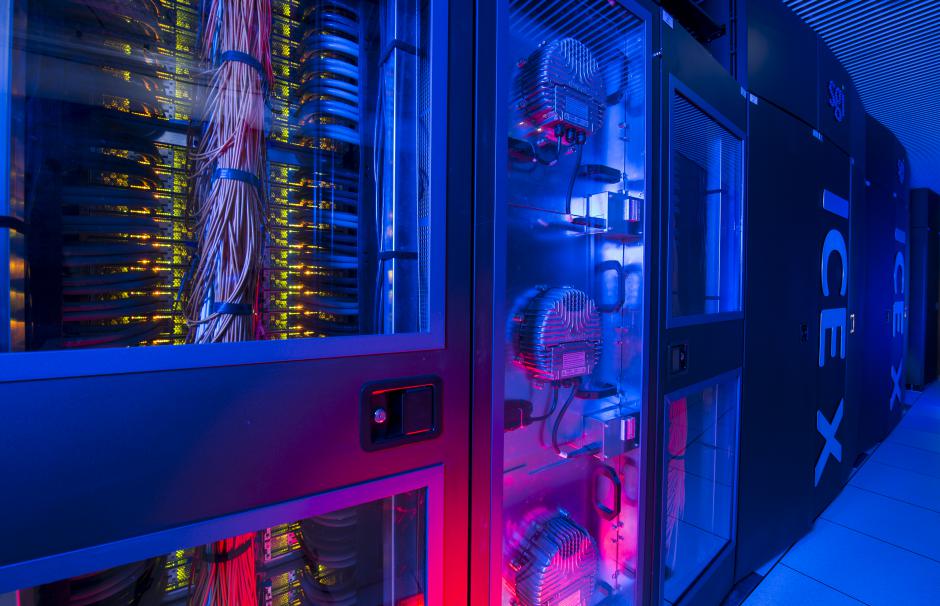 ©PASCAL LAURENT / TOTAL
©PASCAL LAURENT / TOTAL
Most of the following infrastructure produces heat:
This heat can be recovered to save energy.
Heat exchangers deliver heat to district heating networks to produce hot water and heat. They are also used to recover heat for the plants’ own internal processes. The heat transfer infrastructure needed to manage this recovery is still underdeveloped.
 ©STF / AFP
©STF / AFP
Low-temperature geothermal energy, between 40°C and 110°C, is produced by harnessing the heat stored in the ground or in underground hot water reservoirs called aquifers.
Hot water is produced by wells drilled at a depth of 1,000 to 2,500 meters.
Using a system of heat exchangers, the hot water can supply heat to towns (heated floors, radiators and domestic hot water), public buildings (pools, gymnasiums, etc.) and industrial or agricultural sites (greenhouses). In most instances, due to its high mineral content, the water is reinjected into the ground rather than being discharged into nature.
Geothermal energy is a permanently available, local resource that does not emit carbon dioxide.
For a reservoir to be sustainable, its heat resources must be gradually replenished. This involves capping the amount of heat extracted and putting a time limit on the operation of the site.
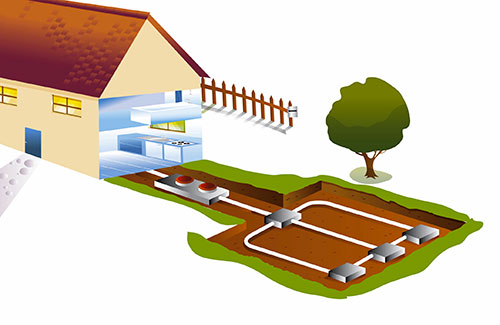 ©THINKSTOCK
©THINKSTOCK
Low-temperature resources between 15°C and 40°C can be harnessed through a backyard setup to heat an individual home.
A system of heat pumps and ground source collectors, featuring a network of underground pipes or vertical boreholes, recovers the heat stored in rock formations near the surface.
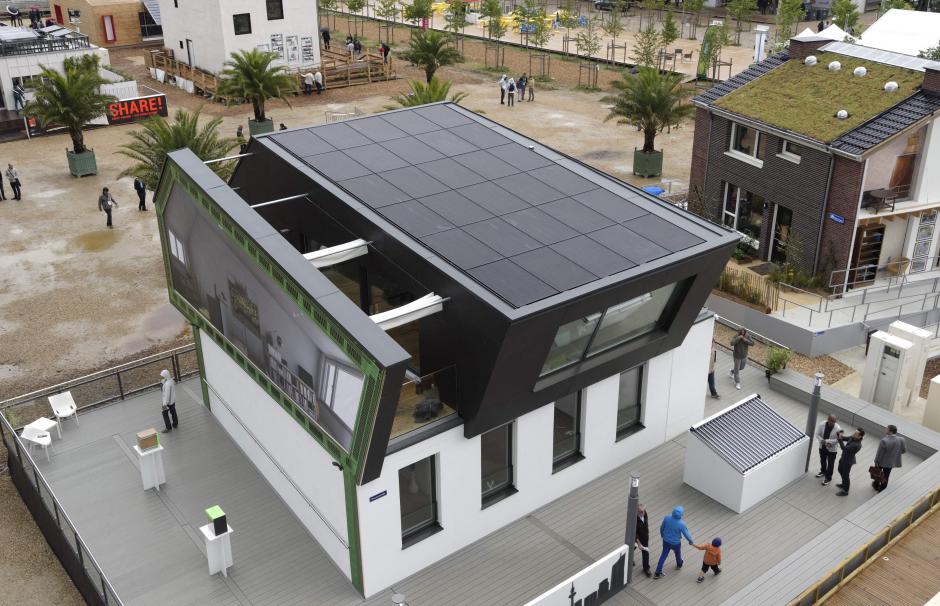 ©DA SILVA AUGUSTO / TOTAL
©DA SILVA AUGUSTO / TOTAL
Whether you live in the city or the countryside, fossil and renewable energy resources provide the light, heat, transportation and food needed to power your everyday life.
All economic activities use energy too.
 ©THINKSTOCK
©THINKSTOCK
Many everyday products are made from plastic, and plastic is made from oil. Like many other materials, plastic is recyclable, which helps limit its environmental footprint.
The manufacturing, housing and transportation industries are constantly making upgrades to improve their energy efficiency.
You too can save energy by changing your household habits.
There are many simple ways to reduce energy consumption at home, such as cooking with a lid on, properly sorting trash, taking showers instead of baths and switching off appliances left in standby mode.
 ©THINKSTOCK
©THINKSTOCK
Research & development (R&D) focuses on the design and development of new technologies and solutions for addressing technical and societal issues.
R&D goes through three stages: theoretical analysis, experimentation through the development of prototypes and pilot installations, and widespread practical application.
It plays an important role in improving energy production, storage, delivery and use.
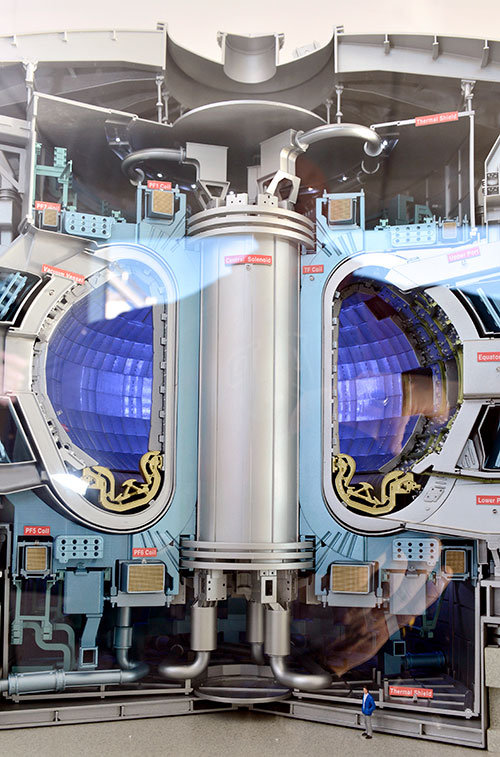 ©AFP
©AFP
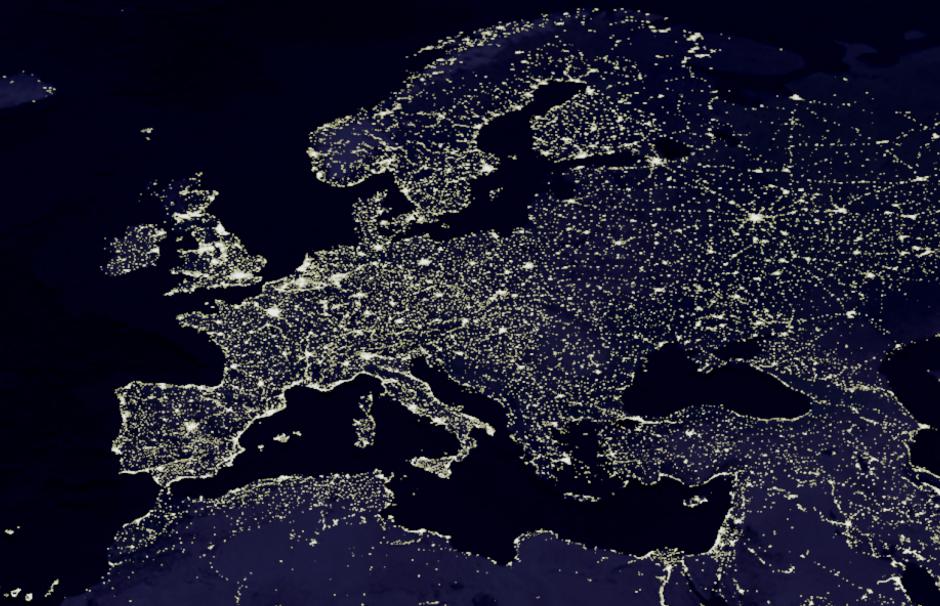 ©NASA / AFP
©NASA / AFP
Energy products are delivered to supply energy when we need it across a vast array of networks: